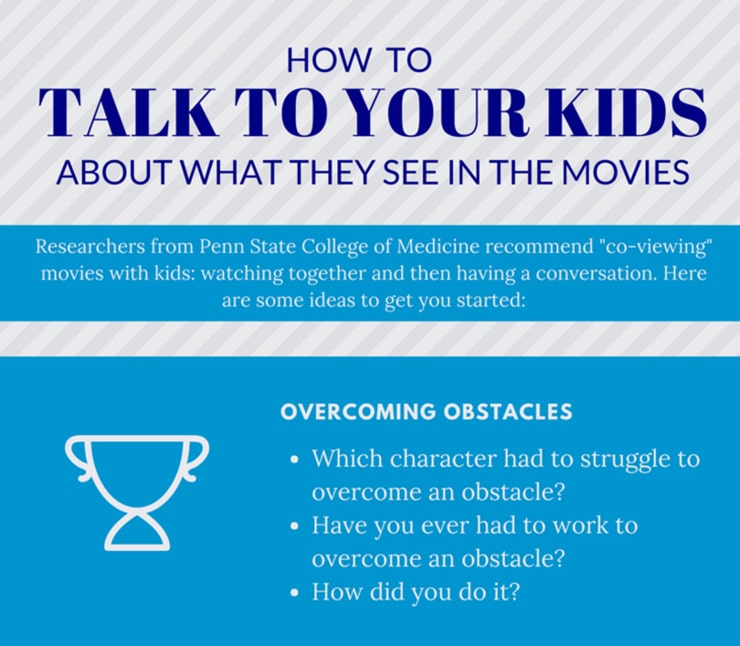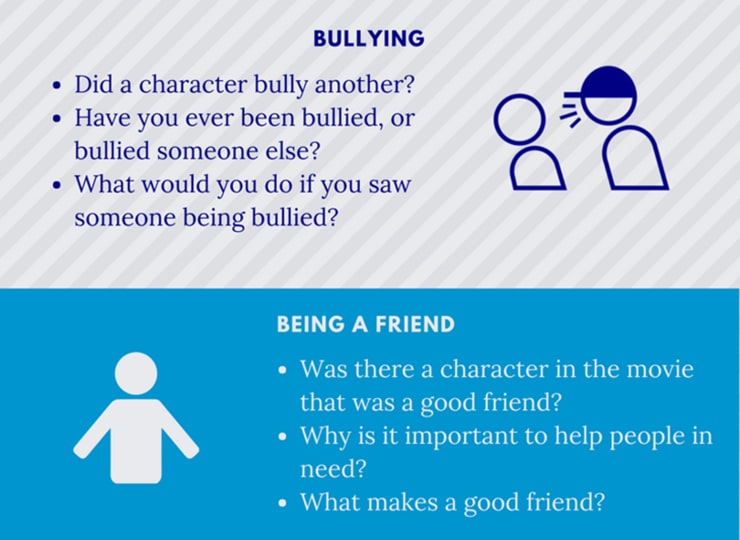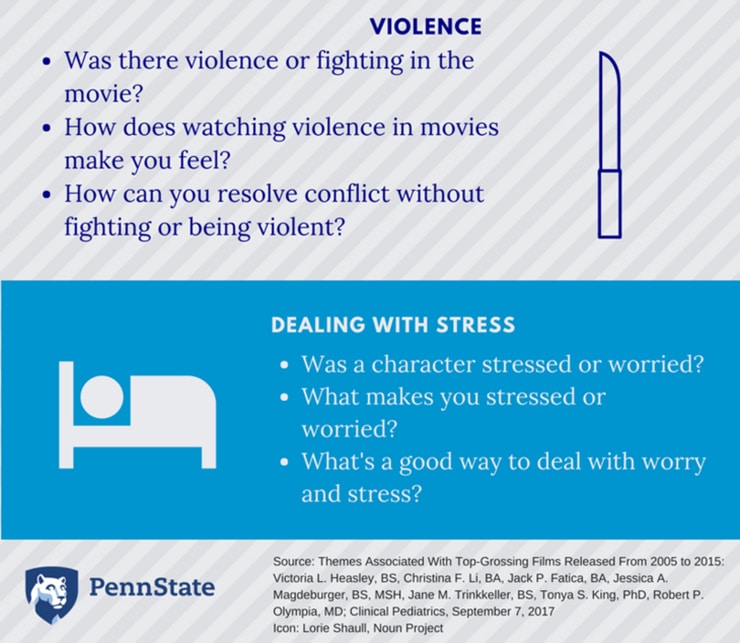Children can benefit from both the positive and negative themes of a movie by watching and discussing the film with a parent or other adult, research shows.
Researchers analyzed popular children’s movies and ranked their most common positive and negative themes. While the most common positive theme was the importance of helping and protecting others, the use of guns and other weapons topped the list of negative themes.
Victoria Heasley, a medical student in the Penn State College of Medicine, says she and the other researchers wanted to highlight how children can gain powerful insights from the themes in movies with the help of coviewing, or watching and discussing the film with a parent or other adult.

“Parents often want to talk about negative themes they see in movies, like drugs or violence, and they absolutely should,” Heasley says. “But it’s also important to talk about positive themes, like how the characters worked together to solve a problem. If you talk about the negative while also capitalizing on the positive, it can be a very productive discussion.”
Previous research has shown that positive messages in movies can be boost cooperation, empathy, and other traits in young viewers. But the American Academy of Pediatrics also warns that violence in the media could result in aggression and bullying, among other ill effects.
Robert Olympia, professor of emergency medicine and pediatrics in the Penn State College of Medicine, says he hoped that by getting a clearer snapshot of the themes in popular children’s movies, it would help parents make better decisions about what their kids watch while ensuring the kids also learn some valuable life lessons.

The researchers narrowed the study’s focus to 45 of the top-grossing films from 2005 to 2015. They selected 15 G-rated movies, 15 PG-rated movies and 15 PG-13-rated movies before creating a list of themes they would track in each film. The researchers then analyzed each movie and ranked the results.
Across all 45 movies, the top three positive themes were the importance of helping and protecting others, collaboration, and working as a team, and standing up for what you believe in. The top three negative themes were the use of guns and other weapons, acts of violence or physical altercations, and demonstrating excessive anger.
“Although many studies have focused on negative themes associated with popular films, such as violence, drug use, and sexual activity, our study shows that top grossing films expose children to positive themes as well,” Olympia says. “It’s important to talk to children about the good and the bad.”

Parents can address negative themes by asking questions like, “Did a character bully another character? Why is bullying bad? What would you do if you saw someone bullied?” Positive themes can be addressed with such questions as, “Did a character stand up for what they believed in? What is something you believe in and would fight for?”
Olympia says that coviewing is essential to help children retain important messages and build key skills.
Parents: You can use Disney to teach kids about death
“This method encourages the development of critical thinking and internally regulated values, and has been shown to decrease aggressive behavior, substance use, and early sexual behavior in adolescents,” Olympia says. “While pediatric health care providers frequently recommend restriction and monitoring of media time, the promotion of coviewing and active mediation would allow parents and guardians to be involved in the development of their children.”
Heasley says coviewing can also be a way for parents to capitalize on the positive traits of a character their child particularly admires.
“Sometimes coviewing helps them make that connection between a character they try to emulate and the positive messages they represent,” Heasley says. “Coviewing is really like an active discussion, and it allows a parent or other adult to pull out these positive themes and it makes the child actually think about what they saw and reinforces that positive theme.”
Aggression linked to media violence in 7 cultures
Heasley and colleagues report the results in the journal Clinical Pediatrics.
Source: Penn State



